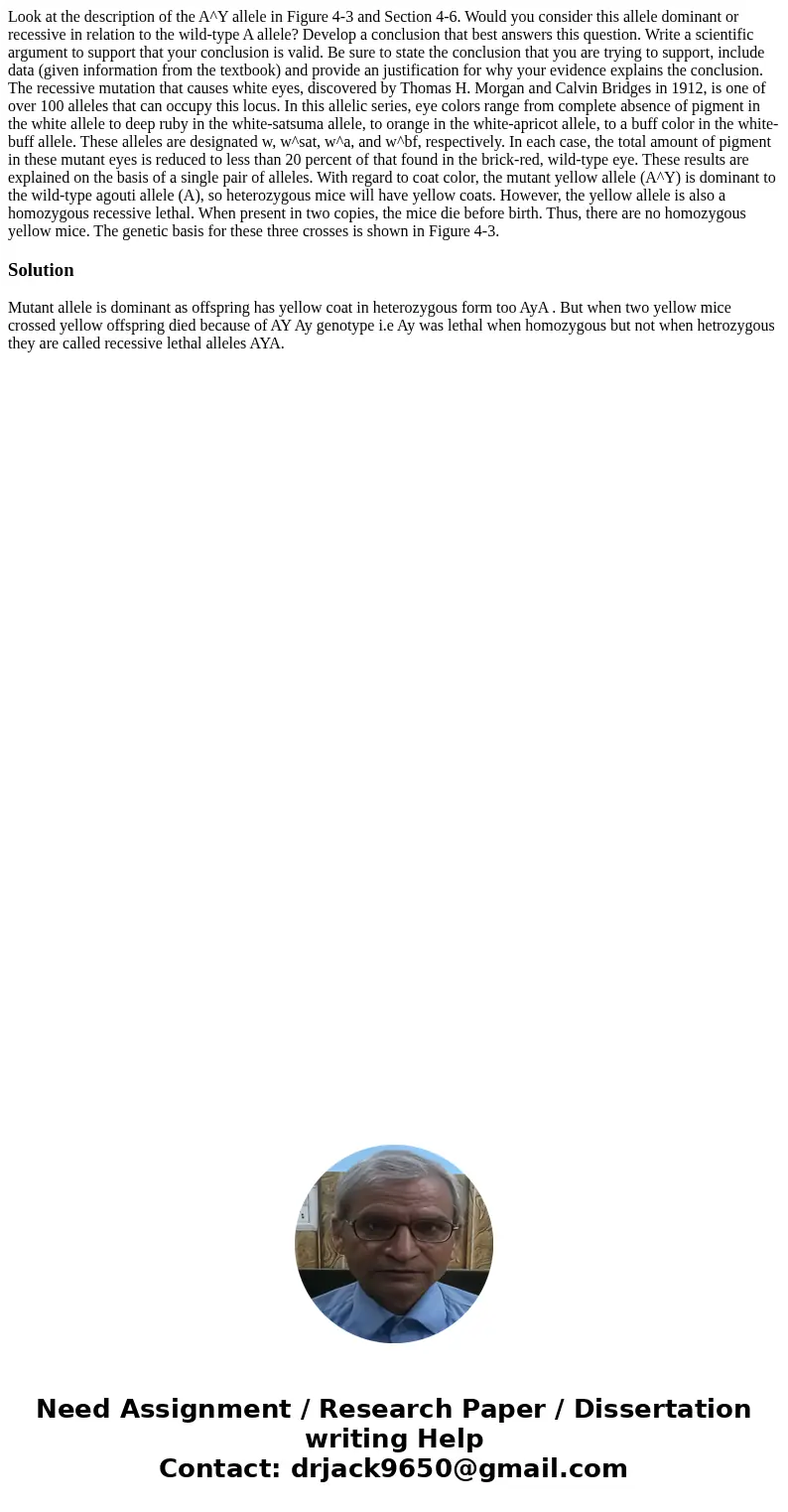Look at the description of the AY allele in Figure 43 and Se
Look at the description of the A^Y allele in Figure 4-3 and Section 4-6. Would you consider this allele dominant or recessive in relation to the wild-type A allele? Develop a conclusion that best answers this question. Write a scientific argument to support that your conclusion is valid. Be sure to state the conclusion that you are trying to support, include data (given information from the textbook) and provide an justification for why your evidence explains the conclusion. The recessive mutation that causes white eyes, discovered by Thomas H. Morgan and Calvin Bridges in 1912, is one of over 100 alleles that can occupy this locus. In this allelic series, eye colors range from complete absence of pigment in the white allele to deep ruby in the white-satsuma allele, to orange in the white-apricot allele, to a buff color in the white-buff allele. These alleles are designated w, w^sat, w^a, and w^bf, respectively. In each case, the total amount of pigment in these mutant eyes is reduced to less than 20 percent of that found in the brick-red, wild-type eye. These results are explained on the basis of a single pair of alleles. With regard to coat color, the mutant yellow allele (A^Y) is dominant to the wild-type agouti allele (A), so heterozygous mice will have yellow coats. However, the yellow allele is also a homozygous recessive lethal. When present in two copies, the mice die before birth. Thus, there are no homozygous yellow mice. The genetic basis for these three crosses is shown in Figure 4-3. 
Solution
Mutant allele is dominant as offspring has yellow coat in heterozygous form too AyA . But when two yellow mice crossed yellow offspring died because of AY Ay genotype i.e Ay was lethal when homozygous but not when hetrozygous they are called recessive lethal alleles AYA.

 Homework Sourse
Homework Sourse